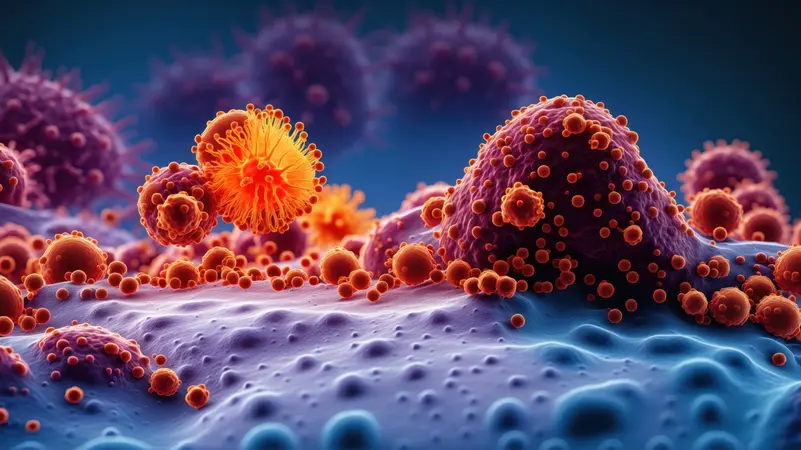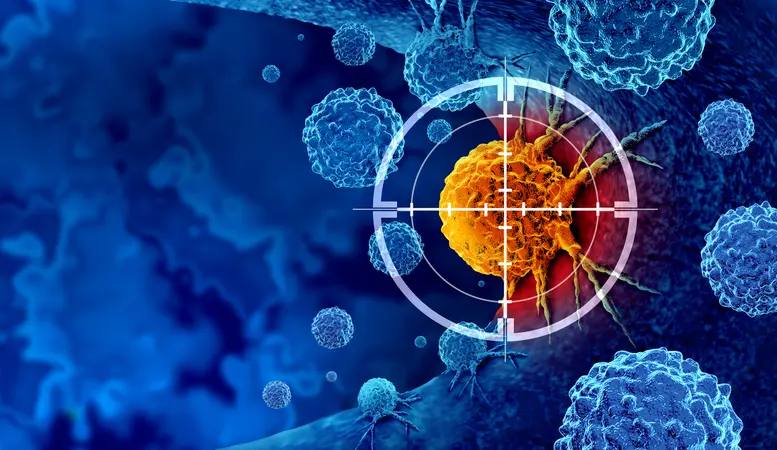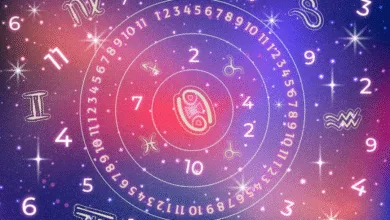Spanish Scientists Discover Energy “Bursts” That Help Cancer Cells Survive Stress
Breakthrough Study Reveals How Cancer Cells Use Mitochondria to Heal and Resist Pressure

In a groundbreaking discovery, researchers from the Centre for Genomic Regulation (CRG) in Barcelona, Spain, have identified a surprising survival mechanism inside cancer cells that could change how scientists approach cancer treatment. The study, published in the scientific journal Nature Communications, found that cancer cells release bursts of energy when exposed to physical or biological stress inside the body — a process that allows them to repair damaged DNA and stay alive under extreme conditions.
This discovery could pave the way for new therapeutic strategies targeting how cancer cells generate and use energy, rather than focusing solely on destroying them. But what exactly happens when a cancer cell is under pressure, and how does it manage to “heal” itself so quickly?
The Discovery: Mitochondria Move to the Nucleus During Stress
Using a highly specialized microscope, the Spanish research team observed that when a cancer cell is compressed — to a width of about 3 micrometers (roughly 1/13 the diameter of a human hair) — its mitochondria rapidly migrate toward the cell’s nucleus.
Within just a few seconds, these mitochondria release adenosine triphosphate (ATP) — often called the “energy currency” of living cells — directly into the nucleus. This sudden energy surge helps the cell repair DNA damage caused by mechanical or environmental stress.
Dr. Sara Sedelci, one of the study’s authors, explained:
“Mitochondria aren’t just stationary batteries feeding the cell energy. They are dynamic responders — they move and act when the cell is in crisis.”
84% of Stressed Cancer Cells Show “Mitochondria-Nucleus Connection”
The researchers found that in 84% of cancer cells exposed to physical stress, mitochondria clustered tightly around the nucleus, forming structures they called “Nucleus-Associated Mitochondria” (NAMs).
These formations were so dense that the nucleus itself became compressed inward, allowing the energy molecules to be transferred more efficiently. By contrast, unstressed cancer cells maintained a normal mitochondrial distribution and did not show the same repair response.
How Scientists Measured the Energy Bursts
To confirm the phenomenon, the team used fluorescent sensors that emit light whenever ATP molecules bind to the cell nucleus. When the cells were subjected to pressure, the sensors flashed up to 60% brighter within three seconds, proving that energy production had sharply increased.
Dr. Fabio Pizzano, another co-author, noted:
“These light pulses are a clear indicator that the cells are reorganizing their metabolism under pressure. They’re literally reprogramming their energy flow to survive.”
Why These Energy Bursts Matter for Cancer Survival
The researchers found that these rapid energy pulses are essential for the survival and spread of cancer cells. When cells are physically compressed — such as when a tumor grows or spreads through blood vessels — their DNA strands can break due to the stress.
Normally, this would lead to cell death. But thanks to the ATP bursts, the cancer cell can quickly activate DNA repair teams that fix the damage within hours. Without these energy surges, the cancer cells stop dividing and eventually die.
The Role of Actin: The Cellular “Scaffolding” That Holds Everything Together
Further analysis revealed the structural secret behind this mechanism. When a cancer cell experiences stress, a network of actin filaments — the same type of protein fibers that enable muscle contraction — forms a shell around the nucleus.
This actin network anchors the mitochondria in place, ensuring a direct energy transfer to the nucleus. However, when scientists injected the compound Latrunculin, which dissolves actin, the mitochondria fell apart from the nucleus and the energy bursts disappeared completely.
This result suggests that targeting actin networks — rather than directly attacking mitochondria — could be a safer and more precise way to stop cancer cells from spreading.
A Potential New Path for Cancer Treatment
Dr. Verena Rupprecht, a co-author of the study, highlighted the broader significance of the findings:
“Mechanical stress response in cancer cells is an underexplored weakness. By understanding how cancer adapts to physical pressure, we might discover new therapeutic pathways.”
The team believes that disrupting these mitochondrial energy transfers could limit metastasis — the spread of cancer to other tissues — without damaging healthy cells. Drugs designed to block actin scaffolding or mitochondrial migration could become a new class of anti-metastatic therapies.
Beyond Cancer: How All Cells Respond to Stress
Although the research focused on cancer cells, the scientists note that this mechanism might apply to all living cells under mechanical stress.
For example:
-
Immune cells compress when moving through lymph nodes.
-
Embryonic cells experience similar pressure during fetal development.
In each case, cells may use quick ATP bursts to protect their genetic material and survive intense physical strain.
As Dr. Sedelci explains:
“Whenever a cell is squeezed or stressed, it sends energy pulses to preserve its genome. Understanding this process could reshape our understanding of how all living cells endure mechanical stress.”

FAQs About the Discovery
1. What did Spanish researchers find about cancer cells?
They discovered that when cancer cells face stress, their mitochondria release bursts of energy that help repair DNA damage and prevent cell death.
2. Why is this discovery important?
It reveals a new survival mechanism in cancer cells — and points to potential treatments that could block this process to stop cancer growth.
3. What are “Nucleus-Associated Mitochondria”?
They are clusters of mitochondria that form around the nucleus during stress, enabling direct energy transfer for DNA repair.
4. How might this help develop new cancer treatments?
Targeting the actin structures that hold mitochondria in place could block energy transfer, weakening cancer cells without harming healthy ones.
5. Is this mechanism unique to cancer cells?
No. The same response may occur in other cell types under physical or environmental stress.
Conclusion
The discovery that cancer cells generate powerful energy bursts to survive mechanical stress could mark a major step forward in oncology. By revealing how mitochondria cooperate with the nucleus under pressure, scientists may have uncovered one of cancer’s most critical survival secrets.
If researchers can learn to interrupt this energy exchange, it may be possible to stop tumors from repairing themselves — and ultimately prevent their spread through the body.
Question for readers:
Do you think targeting a cancer cell’s energy system could be the key to finally stopping metastasis?


